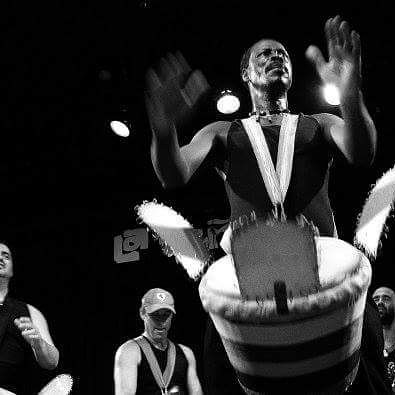Where are you?
Understanding and feeling the basic pulse or heartbeat of a rhythm is crucial for both drummers and dancers because it provides the structure and foundation for all rhythmic patterns that are played.
You need to know where you are in any rhythm or musical situation you are in. Where does the rhythm start, “the one”, and how do you connect.
The one is always the first beat or downbeat, of the four pulse that goes through almost all West African, Congolese and related forms of drumming music in my experience. This includes Afro Cuban, Haitian, Brazilian, Trinidadian as well as many others!
And not only does this need to be learned, it needs to be felt.
What I have noticed as a student, ( which I continue on as), and as a teacher or someone who shares, is the following.
Many new students and even many drumming for a while can listen and or watch and copy what a teacher is showing. However, many don’t know where they are in the rhythm. And end up getting lost, unable to find their way back in.
Here are some key points that underscore the importance of knowing the pulse in relation to rhythm:
1. **The Pulse as the Foundation**: The pulse serves as the backbone of any rhythmic structure. It is the “one” or downbeat that anchors the other notes and patterns. Learning to identify and feel this pulse allows drummers to create music that is cohesive and rhythmically aligned.
2. **Interplay of Parts**: Each part played by different instruments or voices interacts with the pulse in its unique way. Understanding where your individual part fits within the larger context enhances the overall rhythm, making it richer and more complex.
3. **Listening and Internalizing**: While copying rhythms through listening is valuable, it is equally important to internalize the pulse. Students must work not only to replicate rhythms but also to genuinely feel where they fit within the structure. This can be achieved through practice, active listening, and sometimes using tools like ankle bells to highlight the beat.
4. **Historical Context**: The introduction of ankle bells (or foot bells) by educators like Mamady Keita has provided a visual and auditory reference point for students, making it easier to grasp the underlying pulse. This innovation has been significant in how rhythm is taught and understood.
5. **Dance Connection**: The relationship between rhythm and dance is fundamental in African music traditions. The pulse often dictates the movement of dancers, creating a synergistic relationship where rhythm and movement enhance each other.
6. **Coaching and Teaching**: As a teacher, it’s essential to instill in students the importance of the pulse early in their lessons. Encouraging students to actively feel the beat, through movement or vocalization, can foster a deeper connection to the music they are playing.
7. **Patience and Persistence**: As with any learned skill, developing a strong sense of rhythmic pulse takes time and dedication. It’s important for students to practice consistently and be patient with themselves as they work to internalize this concept.
In essence, understanding where you are in the rhythm and how your part relates to the pulse is a fundamental skill in West African drumming. Or any drumming emanating out of the African diaspora. And any drumming in the new world that originated in Africa including Afro Cuban, Haitian, Trinidadian, Brazilians and many more!
It requires both intellectual understanding and physical embodiment, allowing for a fuller and more expressive musical experience.
If this is confusing just watch the video below, it’s easier to watch listen and learn this way.
In the video below I am playing with a foot bell. This will allow you to see and hear where you fit in. Where the one is, and where the pulse is.
However, many arrangements don’t have this part emphasized per se. This is for learning purposes
If you are studying West African drumming and your teacher is from West Africa, they may not be aware of the concepts of “the one”, counting, downbeat and other western terminologies, because they are just that.
They are ways, that we can create a window to look in at the rhythm.
One very useful tool and way of communicating to a teacher with out using western terms is to ask for the call or signal into the rhythm. Some people also call this “the break”. In djembe drumming, especially modern day djembe drumming there is almost always a call in. This call in or break always leads into the one.
So whenever I am in a class, if I am lost, instead of asking the teacher to show or tell me where the one is, I simply ask, “Can you please play this from the break”? And if he or she does, it always shows me the one, or the agreed upon starting point.
One other useful tool. If you are in a situation and can not find the one, try standing up and dancing. Not going wild dancing but just stepping where you feel the beat. Not where you think it is where you feel it. This works for me.

